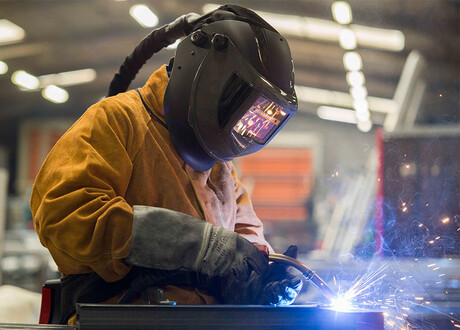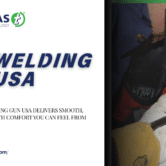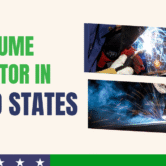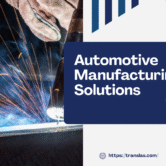
What Makes Welding Fume Extractors in United States the Smart Choice for Workshops
Introduction
Welding fume extractors in United States workshops are becoming essential equipment, not just optional accessories. Your workshop’s air quality directly affects your workers’ health and your business’s bottom line. Every welding operation produces dangerous fumes that contain metal particles, gases, and chemicals. These invisible threats can cause serious respiratory problems, cancer, and other long-term health issues.
You might think ventilation fans or open windows provide enough protection. They don’t. The Occupational Safety and Health Administration (OSHA) has strict rules about workplace air quality. Without proper fume extraction, you’re risking worker health and hefty fines.
This guide shows you why welding fume extractors in United States are the smart choice for your workshop. You’ll learn about different types, key benefits, and how to pick the right system. Whether you run a small fabrication shop or a large manufacturing facility, proper fume extraction protects your team and keeps your business running smoothly.
Why Welding Fume Extractors Matter in United States Workshops
Your workshop environment affects everything from worker productivity to insurance costs. Welding fume extractors in United States facilities have moved from luxury items to necessary safety equipment. The shift happened because research proved the serious health risks of prolonged fume exposure.
United States manufacturing employs over 400,000 welders according to recent workforce data. Each welder faces daily exposure to harmful particles. Without extraction systems, these particles accumulate in your workshop and your workers’ lungs.
OSHA updated its welding fume regulations in recent years, making compliance mandatory. You face penalties up to $15,625 per violation for serious infractions. Repeat violations can cost over $156,000. These numbers make fume extractors a smart financial decision beyond the health benefits.
Your competitors already use extraction systems. Modern workshops prioritize safety because it attracts skilled workers. Young welders research workplace conditions before accepting jobs. A clean, safe environment with proper welding fume extractors in United States gives you a competitive edge in hiring.
Understanding Welding Fumes and Their Health Risks
What Are Welding Fumes?
Welding fumes are complex mixtures created when metal vaporizes during welding. The extreme heat turns solid metal into gas, which then condenses into tiny particles. These particles are so small they bypass your nose’s natural filters and travel deep into your lungs.
The composition varies based on the welding process and materials. MIG welding produces different fumes than TIG or stick welding. Stainless steel creates chromium and nickel particles. Galvanized metal releases zinc oxide. Each combination poses unique health risks.
Common welding fume components include:
- Manganese – causes neurological damage similar to Parkinson’s disease
- Hexavalent chromium – a known carcinogen linked to lung cancer
- Iron oxide – causes siderosis, a lung condition that reduces oxygen absorption
- Aluminum oxide – contributes to Alzheimer’s disease risk
- Zinc oxide – triggers metal fume fever with flu-like symptoms
- Nickel – increases cancer risk and causes skin sensitization
Short-term exposure causes metal fume fever, throat irritation, and breathing difficulty. Long-term exposure leads to chronic bronchitis, asthma, lung cancer, and kidney damage. The International Agency for Research on Cancer classifies welding fumes as Group 1 carcinogens.
OSHA Regulations for Welding Fume Exposure
OSHA sets strict limits on welding fume exposure in United States workplaces. The permissible exposure limit (PEL) for total welding fumes is 5 milligrams per cubic meter over an 8-hour workday. Individual metal components have separate, often lower limits.
Your workshop must monitor air quality regularly. You need to conduct exposure assessments when starting new welding operations or changing processes. These assessments determine if your current ventilation meets safety standards.
OSHA requires engineering controls as the first line of defense. This means installing welding fume extractors in United States workshops before resorting to respiratory protective equipment. Personal protective equipment (PPE) like respirators should supplement, not replace, proper ventilation systems.
Violations result in citations and fines. OSHA inspectors visit workshops after complaints or accidents. They measure air quality, review records, and interview workers. Non-compliance can shut down your operations until you fix problems.
Types of Welding Fume Extractors Available in United States
Portable Fume Extractors
Portable units offer flexibility for workshops with multiple welding stations. You can move these extractors to wherever welding happens. They work well for small shops, mobile repair operations, and multi-purpose facilities.
Most portable welding fume extractors in United States feature wheels, flexible extraction arms, and built-in filters. The arms position near the welding arc to capture fumes at their source. Filter cartridges trap particles before releasing clean air back into your workshop.
Advantages include lower upfront costs, easy installation, and adaptability. You don’t need ductwork or permanent modifications to your building. A single unit can serve multiple welding stations if you move it between jobs.
Limitations exist too. Portable extractors handle lighter duty work better than heavy industrial applications. They require regular filter changes and can’t match the capacity of stationary systems. Your workers must remember to position the extraction arm correctly for each job.
Stationary Extraction Systems
Stationary systems provide permanent solutions for dedicated welding areas. These installations feature fixed ductwork, powerful exhaust fans, and centralized filtration. They handle higher volumes of fumes and serve multiple welding stations simultaneously.
Large fabrication shops and manufacturing plants prefer stationary welding fume extractors in United States facilities. The systems integrate into your building’s infrastructure. Ductwork runs along ceilings or walls to extraction hoods above each welding station.
Benefits include consistent performance, minimal worker interaction, and better filtration. Once installed, your team doesn’t need to move equipment or adjust settings. The system runs continuously during welding operations.
The downsides are higher initial costs and permanent installation requirements. You’ll need professional installation, building modifications, and regular maintenance contracts. Relocating becomes difficult if you move your workshop or change your layout.
Source Capture vs. Ambient Air Systems
Source capture systems use hoods or arms positioned near the welding arc. They catch fumes right where they’re created, before dispersion into your workshop. This approach requires less airflow and smaller equipment because you’re treating a concentrated stream.
Your workers control source capture placement. Flexible arms bend and swivel to follow the welding torch. Fixed hoods work well for repetitive jobs where welding happens in the same spot. Both methods remove 95% or more of fumes when positioned correctly.
Ambient air systems clean your entire workshop atmosphere. Large fans pull air through filters mounted in walls or ceilings. They create negative pressure that prevents fumes from escaping your welding area. This approach works when source capture isn’t practical.
Welding fume extractors in United States workshops often combine both methods. Source capture handles the bulk of fumes. Ambient systems provide backup protection and improve overall air quality. This layered approach ensures comprehensive protection regardless of worker behavior or equipment positioning.
Key Benefits of Using Welding Fume Extractors in Your Workshop
Worker Health and Safety
Your employees face real danger without proper fume extraction. Chronic exposure causes irreversible lung damage, cancer, and neurological disorders. Young welders might not feel effects immediately, but damage accumulates over years of exposure.
Installing welding fume extractors in United States workshops shows your commitment to worker welfare. Clean air reduces sick days, improves energy levels, and extends careers. Experienced welders can work longer without retiring early due to health problems.
The psychological benefits matter too. Workers feel valued when you invest in their safety. They’re more engaged, loyal, and productive. Safety culture attracts top talent who won’t work in shops that cut corners.
You’ll see fewer workers’ compensation claims related to respiratory illness. Medical costs decrease when employees aren’t treating chronic conditions. Prevention through proper extraction costs far less than treating occupational diseases.
Compliance with Federal Regulations
OSHA compliance protects you from legal trouble and financial penalties. Welding fume extractors in United States help you meet or exceed regulatory requirements. Documentation of your extraction system proves due diligence during inspections.
Insurance companies reward shops with proper safety equipment. You might qualify for lower premiums on workers’ compensation and liability policies. Some insurers require fume extraction before they’ll cover welding operations.
State and local regulations sometimes exceed federal standards. California’s Proposition 65, for example, requires warnings about chemical exposure. Proper extraction systems help you meet these additional requirements.
Third-party certifications become easier with documented air quality control. ISO certifications, industry standards, and client audits all examine workplace safety. Your fume extraction system demonstrates professionalism and commitment to excellence.
Improved Workshop Productivity
Clean air means better visibility during welding. Fumes obscure your workers’ view of the weld pool, leading to mistakes and rework. Welding fume extractors in United States facilities improve weld quality by keeping the work area clear.
Your equipment lasts longer in clean environments. Fumes deposit oily residue on machinery, electronics, and building surfaces. This buildup causes premature equipment failure and requires constant cleaning. Extraction systems protect your capital investments.
Workshop morale improves when the environment is comfortable. Workers don’t go home smelling like metal and chemicals. They aren’t coughing or experiencing burning eyes. A clean workshop is a happy workshop.
You can work longer without discomfort. Extended welding sessions in unventilated spaces become unbearable. Proper extraction allows continuous operation without forcing workers to take air breaks or leave the building.
How to Choose the Right Welding Fume Extractor
Workshop Size Considerations
Your facility’s square footage determines extraction capacity requirements. Small shops under 2,000 square feet might get by with portable units. Medium facilities between 2,000 and 10,000 square feet often need multiple portable extractors or a modest stationary system.
Large manufacturing plants over 10,000 square feet require comprehensive stationary systems. Calculate your total welding stations, average simultaneous operations, and ceiling height. These factors determine the cubic feet per minute (CFM) rating your system needs.
Welding fume extractors in United States are sized by airflow capacity. A typical portable unit moves 400-1,500 CFM. Industrial stationary systems handle 5,000-50,000 CFM or more. Match your system capacity to your worst-case scenario, not average use.
Room for expansion matters too. If you’re growing your business, buy a system that handles future needs. Adding capacity to existing systems costs less than replacing undersized equipment. Plan for 20-30% more capacity than current requirements.
Type of Welding Operations
Different welding processes create different fume volumes and compositions. MIG welding produces steady, continuous fumes. TIG welding generates less volume but still requires extraction. Stick welding creates heavy fumes with larger particles.
Specialty processes need extra consideration. Aluminum welding produces fine particles that require HEPA filtration. Stainless steel welding creates hexavalent chromium that needs specialized filters. Galvanized metal releases zinc oxide requiring high-capacity extraction.
Your material thickness affects fume production. Heavy plate welding with high amperage creates more fumes than thin sheet metal work. Consider your typical amperage range when sizing welding fume extractors in United States shops.
Duty cycle matters for equipment selection. Occasional welding allows lighter-duty extractors. All-day production welding needs industrial-grade systems designed for continuous operation. Match equipment durability to your usage patterns.
Budget and Maintenance Costs
Initial purchase price is just part of the total cost. Consider installation expenses, electrical requirements, and building modifications. Portable units cost $1,500-$10,000 depending on capacity and features. Stationary systems range from $15,000 to $150,000 or more.
Operating costs include electricity, filter replacements, and maintenance. Filters for portable units cost $50-$300 and last 3-12 months depending on usage. Industrial filter cartridges run $500-$2,000 and need annual replacement.
Energy consumption varies by system size. A portable extractor uses 1-2 kilowatts per hour. Large stationary systems might consume 10-50 kilowatts. Calculate your energy costs based on operating hours and local utility rates.
Don’t forget maintenance contracts. Professional service ensures optimal performance and extends equipment life. Budget $500-$5,000 annually for inspections, belt replacements, and motor service on welding fume extractors in United States installations.
Top Features to Look for in Modern Fume Extractors
Your investment should include features that maximize efficiency and minimize hassle. Automatic filter monitoring alerts you when filters need replacement. This prevents performance degradation and maintains consistent air quality.
Variable speed controls let you match extraction power to the welding task. Light work doesn’t require full power, saving energy and reducing noise. Heavy production welding gets maximum extraction when needed.
Self-cleaning filter systems extend filter life and reduce maintenance. Automatic pulse-back cleaning shakes collected particles into collection bins. You empty bins instead of replacing expensive filter cartridges.
HEPA filtration captures particles down to 0.3 microns. This level removes 99.97% of harmful particles. It’s essential for aluminum welding, stainless steel, and any process creating ultra-fine particles.
Spark arrestors prevent fire hazards by stopping hot particles before they reach filters. This safety feature protects your investment and prevents workshop fires. It’s mandatory for welding fume extractors in United States shops doing cutting or grinding.
Flexible arm positioning with stable hold ensures proper fume capture. Arms should move easily but stay where you put them. Magnetic bases, spring-loaded joints, and friction locks all provide positioning stability.
Noise reduction features matter in smaller workshops. Look for units rated below 75 decibels at 10 feet. Insulated housings and vibration dampening keep your workshop comfortable.
Energy efficiency ratings save money long-term. ENERGY STAR certified units or those with EC motors reduce electricity consumption by 20-40%. The savings add up over years of operation.
Installation and Maintenance Best Practices
Proper installation maximizes your fume extractor’s effectiveness. Position portable units on stable surfaces near power outlets. Keep extraction arms within 6-12 inches of the welding arc for optimal capture.
For stationary welding fume extractors in United States facilities, hire certified installers. They’ll calculate ductwork sizes, plan optimal hood placement, and ensure code compliance. Poor installation wastes money and fails to protect workers.
Create a maintenance schedule from day one. Check filters weekly by visual inspection. Monitor pressure gauges that indicate filter loading. Replace filters when pressure drops 20-30% below specifications.
Clean ductwork annually in stationary systems. Particles accumulate inside ducts, reducing airflow and creating fire hazards. Professional duct cleaning restores performance and prevents problems.
Inspect extraction arms monthly for damage or wear. Joints loosen with repeated movement. Tighten mounting hardware and lubricate moving parts. Replace damaged arms promptly to maintain proper positioning.
Service motors and fans according to manufacturer schedules. Belt-driven units need tension adjustments and belt replacements. Direct-drive motors require bearing inspections. Annual professional service prevents unexpected breakdowns.
Document all maintenance activities. OSHA requires records proving your safety equipment works correctly. Maintenance logs demonstrate due diligence during inspections or accident investigations.
Train workers on proper welding fume extractor use. Show them correct arm positioning, when to replace filters, and how to report problems. Equipment only protects people who use it correctly.
Cost Analysis: Investment vs. Long-Term Savings
The upfront cost of welding fume extractors in United States workshops seems expensive until you calculate the alternatives. An OSHA fine for air quality violations starts at $15,625. Serious violations can reach six figures.
One workers’ compensation claim for respiratory illness costs $50,000-$500,000 depending on severity. Chronic exposure cases can exceed $1 million when including medical costs, lost wages, and legal fees.
Calculate your return on investment (ROI) using real numbers. A $5,000 portable extractor protecting two welders pays for itself by preventing a single serious health claim. A $50,000 stationary system serving 10 welders provides massive ROI over its 15-20 year lifespan.
| Investment Type | Initial Cost | Annual Operating Cost | Protection Level | ROI Timeline |
| Basic Portable | $1,500-$3,000 | $300-$600 | Light duty, 1-2 stations | 1-2 years |
| Professional Portable | $4,000-$10,000 | $600-$1,200 | Medium duty, 2-4 stations | 2-3 years |
| Small Stationary | $15,000-$35,000 | $2,000-$4,000 | 4-8 stations | 3-5 years |
| Industrial System | $50,000-$150,000+ | $5,000-$15,000 | 10+ stations | 5-7 years |
Hidden savings appear in unexpected areas. Worker retention improves when you provide safe conditions. Recruiting costs drop when you’re known for safety. Experienced welders stay longer instead of seeking better environments.
Your shop’s reputation benefits from visible safety commitment. Clients visiting your facility notice clean air and modern equipment. This professionalism wins contracts and justifies premium pricing.
Insurance savings accumulate year after year. Many carriers offer 10-20% discounts on premiums when you document safety improvements. These savings continue throughout your equipment’s lifespan.
Tax advantages reduce actual costs. Welding fume extractors in United States qualify for immediate expense deduction or depreciation. Some states offer tax credits for workplace safety improvements. Consult your accountant about available benefits.
Real-World Success Stories from United States Workshops
A Texas fabrication shop with 15 welders installed a comprehensive extraction system in 2019. Before installation, they faced chronic absenteeism and high turnover. Workers complained about headaches, breathing problems, and going home covered in residue.
The $85,000 investment in welding fume extractors in United States facilities changed everything. Within six months, sick days dropped 40%. Worker turnover decreased from 45% annually to 12%. Quality improved because welders could see their work better.
Their insurance company reduced workers’ compensation premiums by 15% after inspecting the new system. The annual savings of $12,000 combined with reduced turnover costs created an 18-month ROI. Five years later, they haven’t had a single respiratory illness claim.
A Michigan automotive supplier faced OSHA citations in 2020 for exceeding exposure limits. The $31,000 in fines got management’s attention. They invested $120,000 in a modern extraction system with source capture and ambient filtration.
Follow-up air quality testing showed 92% reduction in hazardous particles. OSHA closed their case with no further action. The company used their improved safety record to win a major contract with an automaker requiring certified safe working conditions.
A California aerospace welding contractor couldn’t attract young talent. Recent technical school graduates turned down job offers after touring their facility. The owner invested $45,000 in portable extractors and workshop modernization.
Their next recruiting event attracted 50% more applicants. They hired three skilled welders who specifically mentioned the clean work environment during interviews. The welding fume extractors in United States facility became a selling point in a competitive labor market.
Common Mistakes to Avoid When Buying Fume Extractors
Undersizing your system is the most common error. Don’t calculate based on average use. Your extraction system must handle peak production times. Overworked extractors fail early and don’t protect workers adequately.
Ignoring filter costs leads to budget surprises. Some cheap extractors use expensive proprietary filters. Calculate three years of filter costs before buying. Sometimes expensive units with cheaper filters cost less long-term.
Skipping worker training wastes your investment. The best welding fume extractors in United States workshops are useless if workers don’t position arms correctly or change filters on time. Include training in your implementation plan.
Buying wrong filtration types for your materials creates problems. Aluminum welding needs HEPA filters. Regular filters clog quickly and don’t capture fine particles. Match filtration technology to your welding processes.
Forgetting about noise levels impacts workshop comfort. Some industrial extractors sound like jet engines. Check decibel ratings and consider acoustic enclosures if needed. Your workers shouldn’t need hearing protection from safety equipment.
Neglecting maintenance access complicates filter changes. Units mounted in awkward locations or requiring special tools frustrate workers. They’ll delay maintenance, reducing protection. Choose equipment with easy filter access.
Overlooking electrical requirements creates installation delays. High-powered extractors need dedicated circuits and specific voltage. Verify your electrical capacity before ordering. Upgrading electrical systems adds unexpected costs.
Not planning for expansion requires costly upgrades later. If you might add welding stations, buy modular systems that grow with you. Adding capacity to existing welding fume extractors in United States systems costs less than replacing everything.
FAQs About Welding Fume Extractors in United States
Q: How often should I replace filters in my fume extractor?
A: Filter life varies based on usage intensity and material welded. Light-duty shops might go 6-12 months between changes. Heavy production facilities need replacements every 1-3 months. Monitor pressure gauges and visual indicators rather than following arbitrary schedules.
Q: Can I use regular HVAC filters instead of specialized welding filters?
A: Never use standard HVAC filters in welding fume extractors in United States. Welding filters handle metal particles, high temperatures, and potential sparks. HVAC filters clog immediately, create fire hazards, and don’t capture dangerous particle sizes. Always use manufacturer-specified filters.
Q: Do portable extractors work as well as stationary systems?
A: Portable units provide excellent protection when sized correctly and positioned properly. They can’t match the total capacity of large stationary systems, but they work well for shops with fewer than 5 welding stations. The key is proper placement near the welding arc.
Q: What’s the difference between welding fume extractors and shop ventilation?
A: General ventilation moves air through your building but doesn’t specifically target welding fumes. Welding fume extractors in United States capture fumes at the source before they disperse. You need both systems working together for complete protection.
Q: Are there tax benefits for installing fume extraction systems?
A: Most safety equipment qualifies for immediate expense deduction under Section 179. Some states offer tax credits for workplace safety improvements. Energy-efficient systems might qualify for additional deductions. Consult your tax professional about specific benefits.
Q: How loud are fume extractors during operation?
A: Noise levels vary by model and power. Portable units typically produce 65-75 decibels at 10 feet. Industrial systems can reach 80-90 decibels. Choose units with noise ratings appropriate for your workshop environment.
Q: Can fume extractors eliminate the need for welding respirators?
A: Proper extraction systems often eliminate respirator requirements for routine welding. OSHA requires engineering controls first. However, confined spaces, unusual materials, or equipment failures might still require respirators as backup protection.
Q: What maintenance do fume extractors require beyond filter changes?
A: Check and tighten mounting hardware monthly. Inspect extraction arms for damage. Clean pre-filters weekly if equipped. Service motors and fans annually. Professional inspections once or twice yearly ensure optimal performance.
Conclusion and Next Steps
Welding fume extractors in United States workshops aren’t optional extras anymore. They’re essential safety equipment that protects your workers, ensures regulatory compliance, and improves your bottom line. Every shop that performs welding needs proper fume extraction.
You’ve learned about different extractor types, key benefits, and selection criteria. The right system depends on your workshop size, welding processes, and budget. Both portable and stationary systems offer excellent protection when properly matched to your needs.
The investment pays for itself through reduced health claims, lower insurance premiums, and improved worker retention. Welding fume extractors in United States facilities attract better talent and win more contracts. Clean, safe workshops outperform competitors who cut corners on safety.
Don’t wait for an OSHA citation or worker illness to take action. Evaluate your current air quality and fume extraction capabilities today. Calculate the true cost of inaction versus the modest investment in proper equipment.
Take action now:
- Assess your current workshop air quality and fume levels
- Calculate how many welding stations need extraction coverage
- Request quotes from multiple suppliers for appropriate systems
- Review your budget and available financing options
- Schedule installation before starting your next big project
Your workers deserve clean air. Your business deserves protection from legal and financial risks. Welding fume extractors in United States provide both. Make the smart choice and invest in proper fume extraction today.
Contact reputable suppliers in your area for site assessments and proposals. Most offer free consultations to help you choose the right system. Start protecting your workers and your business now.




